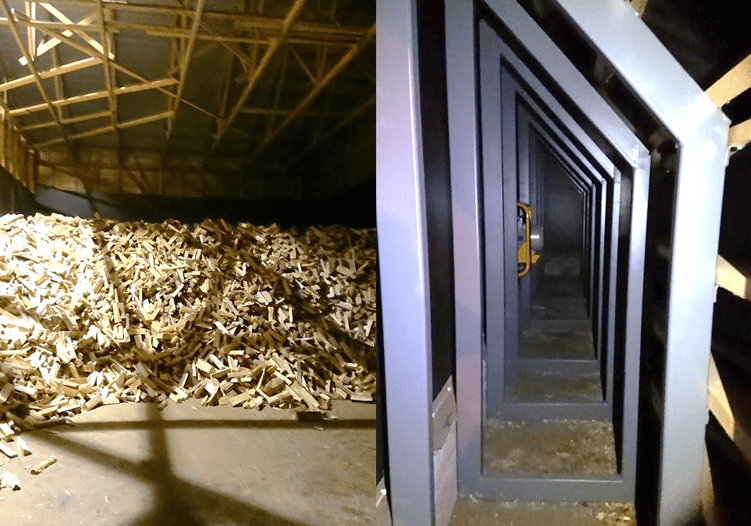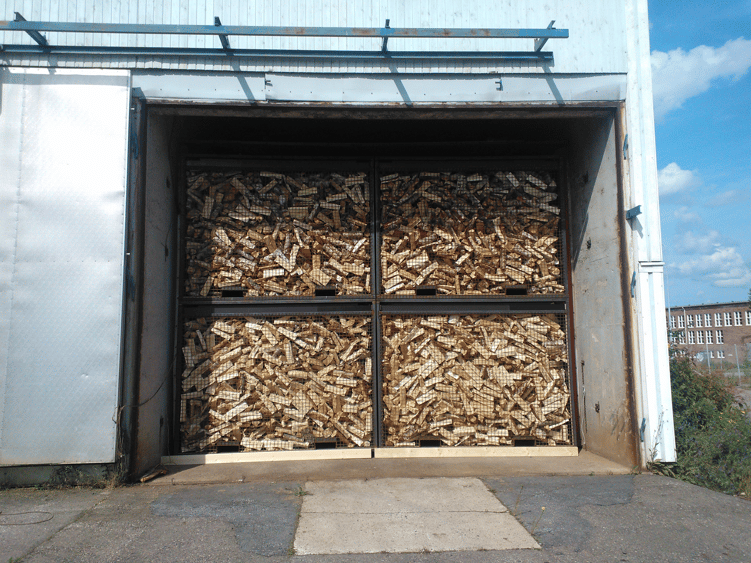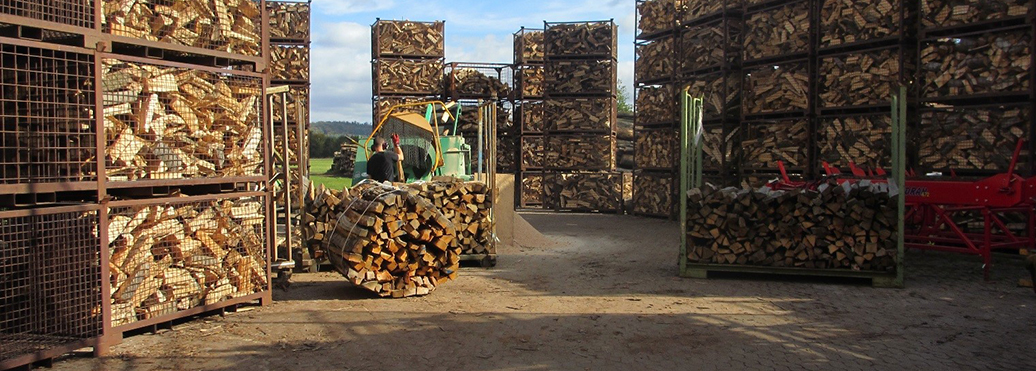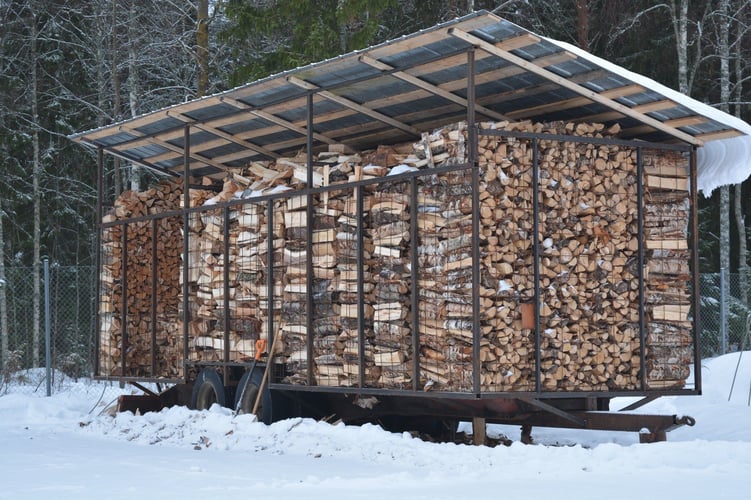Drying your firewood is an important part of your production process. That's why it matters how you choose to do it. Carefully chosen drying method can help you to improve your quality control and facilitate transportation.
Drying firewood has an impact on the speed of your production process
In our previous blog text How to get cleaner firewood? we discussed about the importance of drying your firewood as quickly as possible because this speeds up the entire production process.
The moisture content for the logs should be 15-20% for them to burn and produce heat efficiently. Many firewood producers choose to rely on traditional firewood drying methods, ie natural drying.
In this case the best time to cut your firewood is usually spring. This way you will have enough time to dry them before the autumn season. To intensify the drying process you can chop the firewood directly into a warehouse with breathable walls or stack them under a canopy.
Air drying in log bags or log cages makes it easier to transfer your firewood during the drying process if necessary. It also makes it easy to transport the firewood to the customer. Wood sacks are a popular solution in many countries and almost all sacks are made of highly breathable material which allows the firewood to dry quick and easy.
Artificial drying is effective for the professional use
The natural drying method is working relatively good when the weather conditions are correct ie. there is enough wind and sun. But if it is too rainy and the relative humidity is too high, the natural method does not work efficiently. In most countries this makes the natural drying method inefficient for at least part of the year.
In case you want to make dry firewood all year round, you most likely need to use artificial drying. Different artificial drying methods are popular especially among professionals. In artificial drying you speed up the drying process for example with a kiln dryer or with an air dryer with artificial ventilation.

The picture shows a dryer and a ventilation channel in which firewood is dried by forced ventilation with a vacuum.
With an air dryer with artificial ventilation the air is traveling through the pile of firewood and is then blown out of the building. While traveling through the firewood the air transports moist out of the stack. The air dryer with artificial ventilation can also be built in an old, uninsulated warehouse. With this drying method the firewood is generally treated as a bulk. The circulation time is two weeks an average, but as with traditional outdoor air drying the operating time is limited by the weather.
With a hot air kiln dryer, the warm air is recirculated with fans and heat-exchangers are used to remove the moisture evaporated from the firewood from the air. It is also possible to use heat-exchanger to cool the air again before blowing it out and same time hot water can warm the air that is vacuumed in. This significantly improves efficiency especially in winter time.
To reduce energy costs you can take advantage of the wood chips or wood left over for the heating. One of the advantages of the hot air kiln is that in some countries firewood can be sold with a better price if it is marked hot kiln treated. To avoid the heat loss it is important that the building is insulated. With the kiln dryer the firewood is stored in the cages and depending on the temperature the circulation time can be only few days.

The picture shows a hot air dryer for artificial drying.
With an artificial drying it is possible to achieve lower stock levels. In addition it offers you more flexibility to produce any length of firewood by the order despite the time of the year. This offers you a competitive advantage to those firewood sellers who only have a certain length of dry firewood available or whose stocks are already sold out and therefore only have fresh wood available for the customers.
When you consider the method for drying your firewood, you should consider both; the amount of firewood you produce and your customer needs. Investing in artificial drying is a good choice if you produce firewood professionally, need a shorter circulation time for your firewood or if your customers have special requirements regarding the quality and/or dimension of the firewood.

PRO TIP!
A moisture meter is an easy and efficient way to check the moisture of the wood. You can spend as much as you want on a moisture meter but many hardware stores sell them relatively cheap.
Remember that you can also get creative with drying your firewood! You can for example use an old greenhouse building for the drying process.



